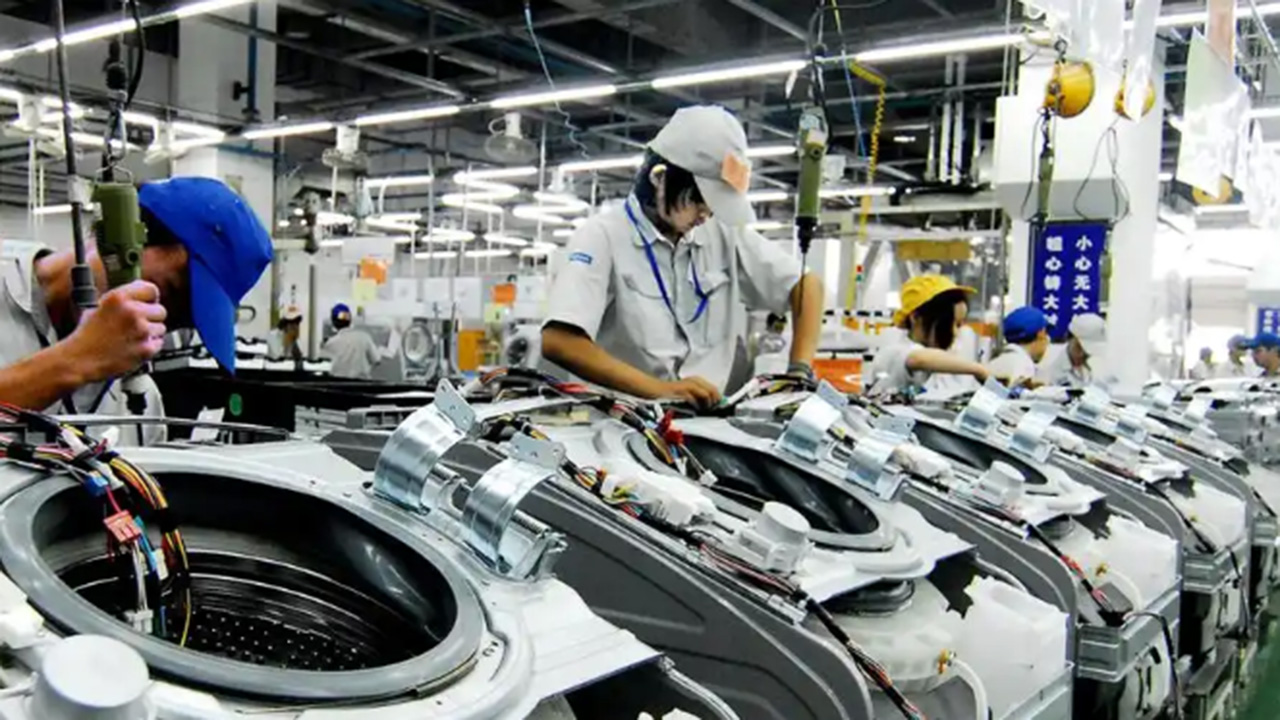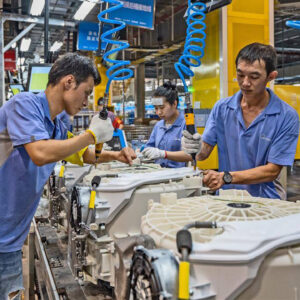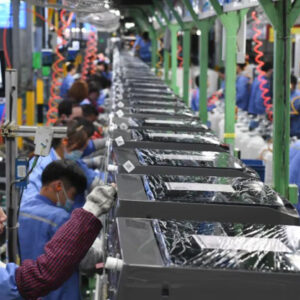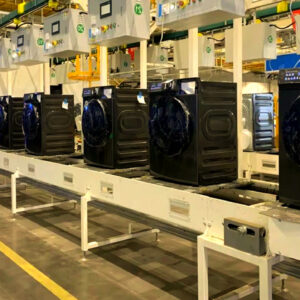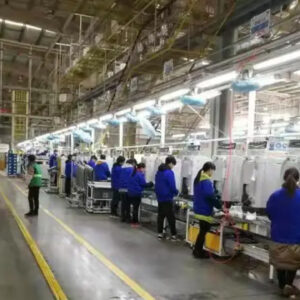SKD Washing-Machine Assembly Line—Chinese Washing Machine Assembly Line Factory
Description
We specialize in providing solutions for Washing Machine Assembly Lines/Production Lines.
Washing Machine Assembly Lines/Production Lines are Suitable to Assemble/Produce Washing machines.(Welcome to contact us, we will suggest and design the suitable Assembly Lines/Production Lines for you.)

SKD washing-machine assembly line
1. Unload the container
About four machines per layer. A worker slices the strapping bands, uses a cordless driver to remove the wood-deck screws, and lifts the carton onto a roller conveyor.
2. Load the cabinet
The cabinet is already powder-coated and carries the energy label. It is simply dropped onto a twin-speed-chain pallet that has three nylon locating pegs; no extra clamping is needed.
3. Drop in the drum module
At the home plant the inner drum, flange and pulley were pre-assembled into one “kebab” module. A six-axis robot grips the lifting eyes, a vision camera reads four locating holes in the cabinet, offsets ±5 mm, and lowers the module straight in. The worker only removes four yellow transit bolts and throws them into a return bin.
4. Fit the counter-weight
The concrete weight is already riveted to the back cover and the hinge is factory-welded to the cabinet. The operator flips the back cover closed and snaps two plastic quick-fit clips—no metal screws.
5. Connect electric and water
All cables use TPA push-in connectors. Push the motor harness (red-blue-yellow) until it clicks, do the same for the water-level sensor and drain pump. Hoses are EPDM with bayonet couplers: align the collar, push, pull to check. The whole job is timed at 30 seconds; no wire stripping, no Teflon tape.
6 .Seat the door seal
The seal lip is lightly dusted with talc. The operator works it around the door flange, then starts a pneumatic head with eight profiled fingers. One stroke presses the seal wire into the groove at 0.45 MPa; if pressure is low the station locks and the unit cannot index.
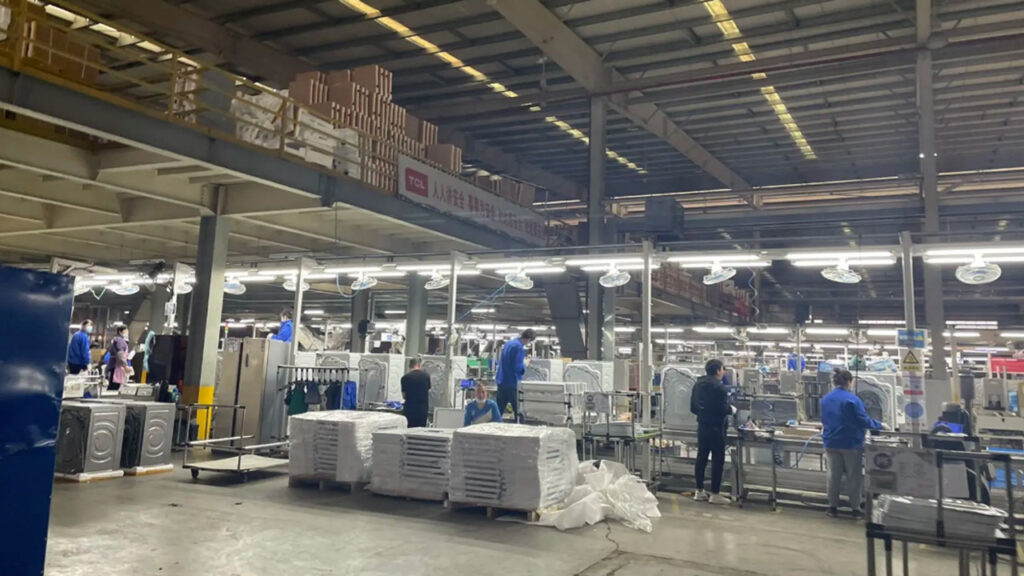
7. Close the back cover
Swing the hinge shut, slap six plastic clips around the perimeter, plug in the ground-lead fast-on. Cabinet is now closed.
8. Leak test
In a sealed chamber automatic plugs close the inlet and drain ports, water is pressurised to 0.6 MPa and held for 30 s. AI cameras look for droplets; any leak triggers a red spot of paint and a divert arm pushes the machine to a rework spur.
9. Function test
A guided test plug docks itself; the operator only has to push it home. The cabinet door closes automatically and the machine runs: fill 30 s, wash 60 s, spin 90 s. Current, off-balance and noise are logged against the laser-etched QR code.
10. Label and pack
An inline printer-apply unit prints the energy label and serial number on the fly. A robot grips the machine, rotates it 90° and lowers it into a carton whose bottom is already pre-folded. The same robot folds the top flaps and tapes the case. A palletising unit stacks 12 cartons per pallet; forklift drives straight to the warehouse.
